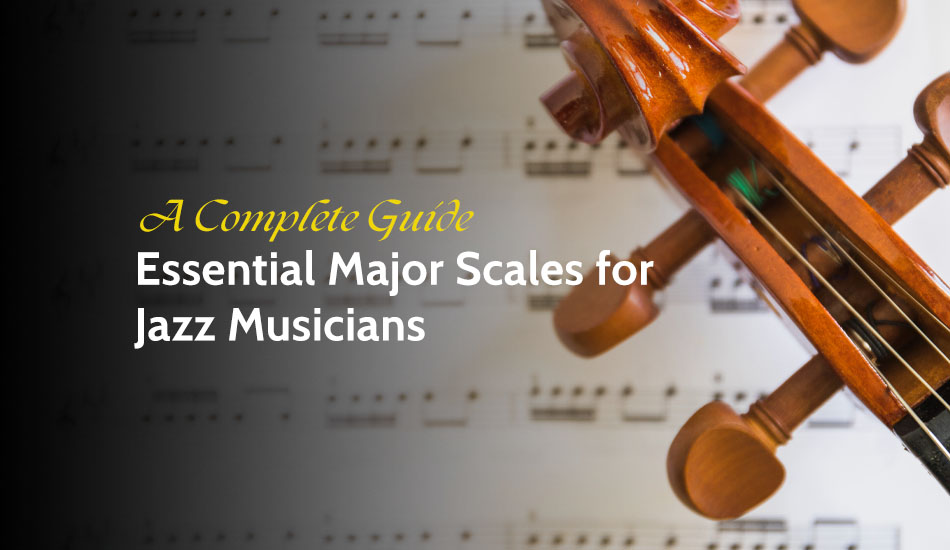
by dynamite | Dec 17, 2024 | Blog
If you are thinking about improving your jazz skills and comprehending the specifics of practising jazz standards, the scales for jazz are a must-know. These scales underpin melodies, improvisation, and harmonic movement for every jazz musician and are an essential component for creating any number of improvised jazz lines or chords. Whether you are a pianist or a vocalist, major scales open up more possibilities than you can imagine, make it easier for you to read chords, and bring class to your melodies.
Learn the 12 major scales, find out the best way to practice them, and discover what scale modes are in this easy-to-follow guide while also learning about their uses in Jazz.
The 12 Major Scales (All 12 Keys)
The structure of every major scale is based on a consistent formula of whole steps (W) and half steps (H): W-W-W-W-W-H. This pattern yields a cheerful sound characteristic of the major scale and not of other scales. You want to always feel secure in every key, and when you learn all twelve scales, you are prepared for modulations that take place frequently in jazz compositions.
C Major Scale
The C Major Scale is also the simplest to learn as there are no sharps or flats in this scale. This makes it even better for first-timers to be able to comprehend the scales of jazz.
- Notes: C-D-E-F-G-A-B-C
- Use in Jazz: The C Major Scale is basic for understanding chord formation and basic melodic incantation. Sometimes, it is present in standards such as “So What” and “Autumn Leaves.”
F Major Scale
The F Major Scale teaches you new member one flat (Bb) and contributes to developing your familiarity with the accidentals.
- Notes: F-G-A-Bb-C-D-E-F
- Use in Jazz: This scale is used frequently in the ballads and blues. As for the vibrancy, the F Major Scale is used by many modern jazz singers in their vocal runs.
Bb Major Scale
The Bb Major Scale has flat notes of Bb and Eb. It is a key that forms part of swing and bebop styles of music performances.
- Notes: Bb-C-D-Eb-F-G-A-Bb
- Use in Jazz: It is reckoned as a favorite of brass musicians and, therefore, mandatory for any ornate jazz band, which includes the horn section.
Eb Major Scale
As a key with three flats (Bb, Ab, and Eb), the Eb Major Scale overlays intricate layers to melodies.
- Notes: Eb-F-G-Ab-Bb-C-D-Eb
- Use in Jazz: This scale is best utilized in slow-tempo songs such as jazz ballads and smooth jazz popular songs. Among the best jazz vocalists, there are names who prefer the key of Eb.
Ab Major Scale
The Ab Major Scale contains four flats (Ab, Bb, Db, and Eb), adding a distinctive color to jazz harmony.
- Notes: Ab-Bb-C-Db-Eb-F-G-Ab
- Use in Jazz: A sophisticated key, it’s perfect for advanced players looking to tackle challenging chord progressions.
Db Major Scale (Also C# Major Scale)
The Db Major Scale has five flats (Db, Eb, Gb, Ab, and Bb), while its enharmonic equivalent, C# Major, has seven sharps.
- Notes: Db-Eb-F-Gb-Ab-Bb-C-Db
- Use in Jazz: This scale is characteristic of the modern and modal jazz styles; it is used in compositions which sound somewhat dreamy.
F# Major Scale (Also Gb Major Scale)
This scale is one of the hardest as it has six sharps or six flats when described as an enigmatic equivalent.
- Notes: F#-G#-A#-B-C#-D#-E#-F#
- Use in Jazz: Nevertheless, those who well know this scale can bravely prepare for songs that suddenly start in really intricate keys.
B Major Scale (Also Cb Major Scale)
As with the previous keys, the B Major Scale has five sharps: F#, C#, G#, D#, and A#; there should be extra care when approaching it.
- Notes: B-C#-D#-E-F#-G#-A#-B
- Use in Jazz: It is very useful when performing complex voicings, changes in key in jazz standards, and jazz ballads.
E Major Scale
Four sharps, F#, G#, C#, and D#, are present in the E Major Scale, which belongs to the class of Jazz and contemporary skills.
- Notes: E-F#-G#-A-B-C#-D#-E
- Use in Jazz: This scale is ideal for the players of the guitar and bass who wish to develop chromaticism in their playing.
A Major Scale
The A Major Scale contains 3 sharps: F #, C#, and G#. Owing to its brilliance in tonality, it is preferred for both voice and instrumentals.
- Notes: A-B-C#-D-E-F#-G#-A
- Use in Jazz: This is quite a typical scale for jazz improvisation; it makes solos clear and bright.
D Major Scale
The usage of two sharps, F#, and C#, makes the D Major Scale neither too easy nor too difficult to play.
- Notes: D-E-F#-G-A-B-C#-D
- Use in Jazz: A very general and easy-to-use scale frequently applied to build modal sequences and melodious lines.
G Major Scale
The G Major Scale has one sharp, F# sharp, thus making it one of the easiest scales to use after the C Major Scale.
- Notes: G-A-B-C-D-E-F#-G
- Use in Jazz: It’s a perfect scale to begin with when trying to improvise or study the modes.
Ways to Think of Major Scales When Practicing
To master the scales for jazz, try these methods:
- Practice in Intervals: As for the scales, avoid playing them linearly and spend more time on thirds, fourths, and fifths to learn more about building melodic improvisation.
- Play with Chords: Arrange each scale next to its major and minor chords to see a harmony between them.
- Use Backing Tracks: Practices with play-along accompaniments to mimic real jazz performance scenarios.
What Are Major Scale Modes?
Modes are scales that are basically the major scale but start on different degrees of the scale. For example, the modes of C Major are:
- Ionian (C-D-E-F-G-A-B-C): The standard major scale.
- Dorian (D-E-F-G-A-B-C-D): Widely used in modal jazz.
- Mixolydian (G-A-B-C-D-E-F-G): Essential for bluesy solos.
By practicing in these modes, you learn how to blend scales for jazz into different harmonies, thus coming up with different sounds in the solos.
Conclusion
The entire twelve major scales make for an important course of your growth as a jazz player. These scales for jazz not only teach the technical aspect but also arm you with the capability to be creative in any situation possible.
Take these scales and begin to integrate them into practice and begin to consider them in real jazz pieces. If you are in search of inspiration to use the scale properly, try listening to a modern jazz singer or study the work of the best jazz vocalists to see how the scale looks in action.

by dynamite | Dec 11, 2024 | Blog
Overview
These ‘Easy and Fun Jazz Activities’ will assist in turning your elementary music class into a fun and exciting place to learn music. Jazz, as an art form with full rhythms and colorful background, gives students many opportunities to learn the joy of Jazz. These can be used in teaching lessons focused on rhythm, blaring, jazz creation, or just simply as techniques in introducing aspects of Jazz into your class.
What Kind of Jazz Activities Can You Do in Music Class?
As has been said above, there are plenty of easy and fun jazz activities that are perfect for children. These activities are immersed in basic concepts of jazz, like improvisation, rhythm, and creativity. Not only will the students be taught about the history of jazz, but they will also be able to learn by utilizing their bodies through movement. They will also get to practice sounds and rhythm through vocal play. It provides that learning is achieved effectively with some element of fun and enjoyment.
Jazz Listening and Movement
Listening to jazz is one of the most effective ways for students to do that. Introduce students to famous jazz songs by Louis Armstrong and Ella Fitzgerald and let children dance to the music. You can use this activity in conjunction with easy and fun jazz activities such as dancing to the song, ‘’What a Wonderful World‘’ or even developing simple body drumming patterns. As the students listen, they will be able to impart the type of tempo, rhythm, and patterns of jazz music.
Rhythm and Call-and-Response Exercises
Rhythm exercises are thus an integral part of any easy and fun jazz activities curriculum. Teach onset-rhythm games in which you play a short rhythmic phrase and students answer back. It aids students in making better sense of the improvised, or conversational, nature of jazz. We can also complicate the lesson by incorporating modern jazz singer records and tasking students to match rhythms.
Basic Jazz Improvisation Activities
This is all about jazz and the ability to teach children in a fun process about such concepts as improvisation is really great to do. Young students should perform basic exercises in acting ability using instruments such as piano or xylophone. Encourage students to “play what they feel” while at the same time helping the learners continue to be on beat. When they start to feel relaxed you might introduce a different flow over the tracks or could ask them to compose their riffs.
Jazz-Inspired Sing-Alongs
A new jazz album can be used as a great tool to expose students, especially young ones, to the genre of jazz vocals. Select a lively and easy-to-learn song, such as “A Tisket A Tasket” by Ella Fitzgerald, and invite students to sing along. Explain the choice of words and rhythms in the lyrics to enable the learners to appreciate the difference in jazz singing. This activity is ideal for those students who love singing and extol the genre that is based on vocals.
Exploring Instruments in Jazz
It wouldn’t be jazz without the instruments you see. To introduce the students to the instruments of jazz, it’s important to arrange different stations where the students can get familiar with the sounds some of them produce, such as the trumpet, saxophone, or drums. Allow them an opportunity to experiment with small patterns of percussion instruments on their own or to listen to live or recorded examples. This can be followed by students analyzing various instruments from the greatest jazz albums and their positions in jazz ensembles.
Jazz Storytelling and Improvisation
It goes without saying that jazz and stories are two concepts that practically combine seamlessly. First of all, mix such elements as storytelling and improvisation by giving students the opportunity to develop their own jazz stories. During the storytelling, suggest the students act out with their voices or music as a way of developing this skill. It can be storyline-driven or just an ode to a given feeling through songs. This is quite entertaining and can also be a great concept for teaching about improvisation and Jazz in general.
Jazz Rhythm and Movement Games
Using dance regarding hand jive stimulates learning on swing and rhythm that forms the basis of jazz music. Develop clapping, stomping, or using instruments and hitting the tables following steady patterns from jazz tunes. Ask them to clap along to various tempos – from the modern jazz singer’s rhythm singing to the tricky drum kit groove of famous jazz tunes.
Introducing Jazz Through Art and Crafts
Listening to a piece of jazz music, ask students to make pictures expressing the mood of the composition. They can explain the mood or rhythm of a music piece or describe images representing the instruments used in playing jazz so that they can learn to appreciate jazz from a vantage point of artistry. As such, this simple and enjoyable jazz activity will assist students in understanding the music’s emotional content and form.
Mini Jazz Performance for Parents or Peers
Finally, come up with a mini jazz performance and incorporate everything learned in a finale for parents or peers. Students can perform what they have learned, it could be a simple rhythm, an improvised beat or even singing. This is a good way of creating a winning and appreciation of accomplishment for all the students about jazz. As part of the song and dance performance, the show can use songs from the greatest jazz albums or jazz songs produced by the students.
Conclusion
Using easy and fun jazz activities in your elementary music class is a great idea when it comes to adding the component of jazz to the student curriculum. By listening to the records, moving, and using rhythm exercises and improvisation, the students can get acquainted with jazz.
When kids and adults sing along to songs, or if they are fiddling with instruments having the opportunity to listen and play jazz music and come up with their own melodies, it does foster a lifelong appreciation for the style. Allow the energy of jazz to fill your class, and what you are going to see is the creativity in your students grow!
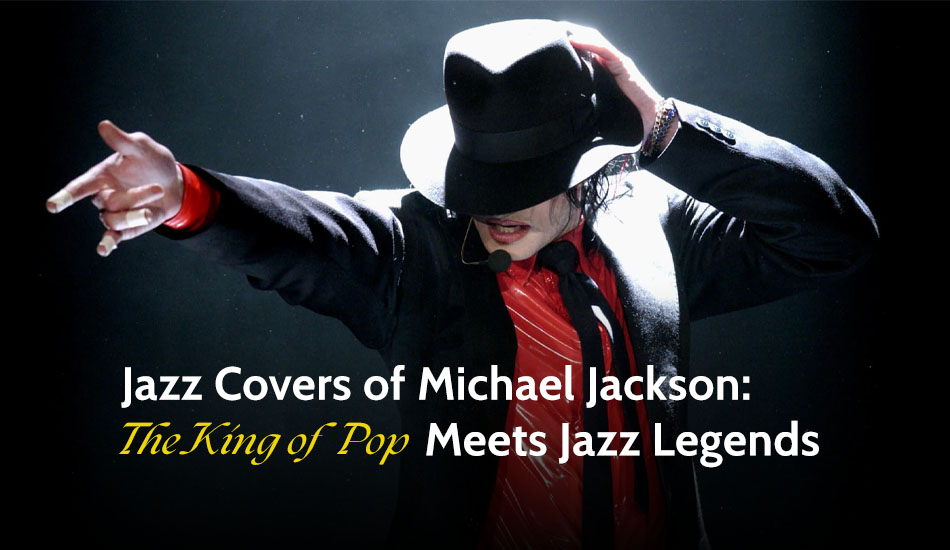
by dynamite | Nov 18, 2024 | Blog
Michael Jackson’s most popular songs have no barrier of time and no barrier of type, proving that he is one of the most effective music artists in history. These characteristics prove that all his songs are enjoyed by everyone on earth, regardless of what type of song it is – it can be popular tracks, dance songs, or slow smoothly textured ballads. His long-limbed melodies and speech-SEND into polymer inflect his bluesy feelings and rhythms for the influence of countless Jazz performers. In today’s edition of Jazz Covers, we take a moment to explore jazz covers of Michael Jackson’s music that offer a fresh perspective on his beloved tracks. These covers breathe new life into Jackson’s songs and highlight his enduring relevance in jazz music.
Michael Jackson’s Impact on Music and Pop Culture
Michael Jackson wasn’t only a singer; he was a pop icon of the century. His music transcended race, color, and creed, and his production style, performing art style, and presentation style revolutionized the world of the music industry. Disks such as Thriller or Bad are, in effect, institutionalized, thus leaving an imprint on pop and every other style of music, including R&B and jazz.
In addition to the versatile lyrics, which are easy to memorize and perform, Jackson’s music is notably expressive and supported by a powerful voice that also encodes emotions in pitch and rhythm. That is why outstanding jazz performers from all over the world are now featuring songs of his creation, producing Jazz Covers of Michael Jackson to reveal the amazing potential of his work.
Why Michael Jackson’s Music Translates Well to Jazz
Thus, one of the reasons that the Jazz Covers of Michael Jackson has been effective is Jackson’s intricate rhythm, melody, and dynamics. Despite pop influences, his music is structurally intricate and well-suited for jazz rereadings. Whether it is the complex rhythm in ‘’Smooth Criminal’’ or the rawness in ‘’Human Nature,’’ these tunes share qualities of jazz that inherently allow for improvisation and expression. The grooves, the choruses, and the soul in Jackson’s compositions are strongly inviting to jazz artists willing to develop new interpretations of them.
Top Jazz Covers of Michael Jackson Songs
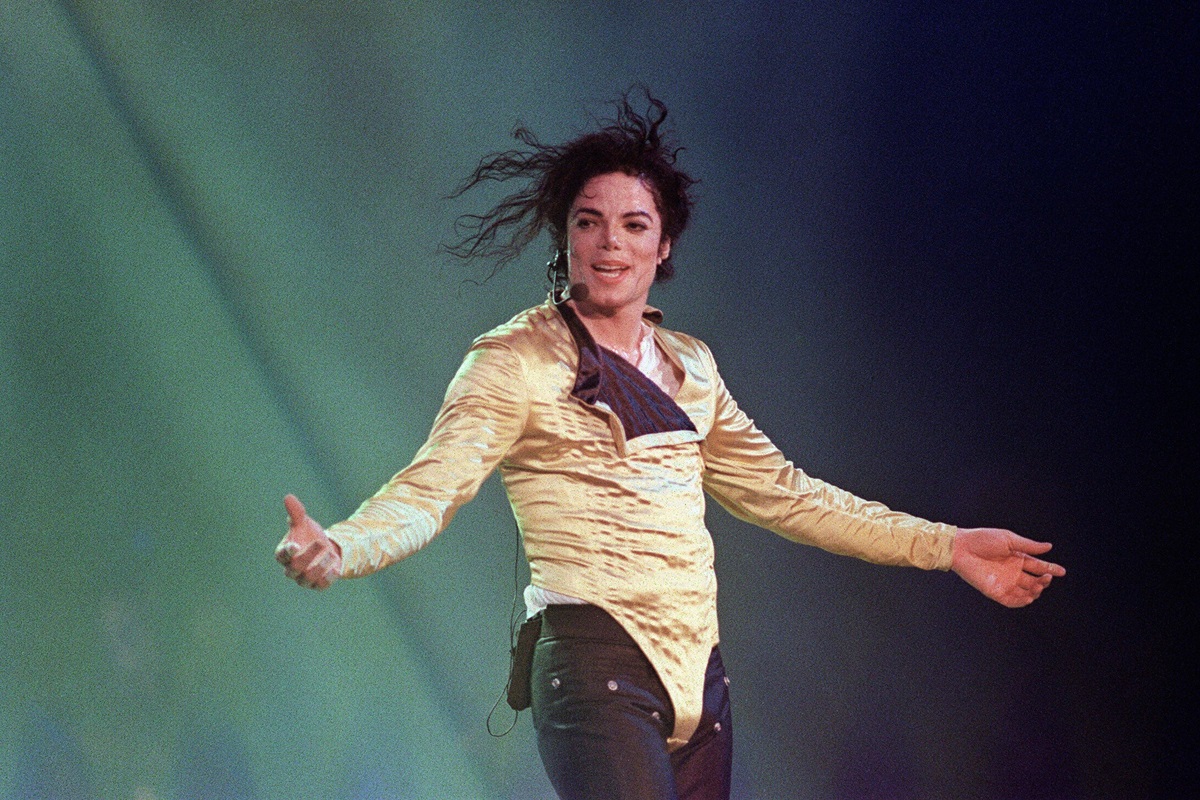
1. Smooth Criminal
Perhaps one of Michael Jackson’s most popular songs, even to this date, is ‘’Smooth Criminal‘’; it becomes even more interesting when interpreted by jazz musicians. As we all know, the song has a unique bassline and heavy beat, and performing artists turn it into a slow jazz number, with the beat and energy never seeming to be lost. The conversion to jazz allows one to play different rhythms and patterns of the beat to create an entirely new sound yet maintain the originality of the inherent worried sound of the song.
2. Thriller
Michael Jackson’s single “Thriller ” is arguably one of his most recognized, as are jazz interpretations of it, which manage to draw out the spooky side of the song. Jazz rendition of “Thriller” is as closely linked to the basic interpretation as the tempo, rhythm, and harmony of MJ’s performance and its contrast to it, the spirit of the song, and its improvement by rich Jazz motives and improvised remarkable Jazzy solos.
3. Human Nature
The track Human Nature is one of the ‘Thriller’ album’s popular ballads, which has been done in many jazz styles. It is easy to analyze the song due to its minor details, making its jazz interpretation possible. In Jazz Covers of Michael Jackson, this song is usually stripped down to its more harmonic elements because artists see this song as a ballad and are, therefore, able to use luxurious saxophone and piano to create an outstanding cover of this song.
4. Billie Jean
Other Michael Jackson songs that can be adapted to jazz include the famous Billie Jean. The bass line is to jazz, and the hook is to hip-hop, and many artists have used the song to go in new directions. SOME slices of jazz are slow, deep, and romantic to the lyrical interpretation, while some turn jazz into bouncy and danceable tunes, proving the genre’s and the song’s elasticity.
5. Rock with You
A perfect example of an MJ’s song that fell under the romance category, “Rock with You,” has a very smooth, slow, and sexually charged. When jazz performers play it, they reveal many smooth jazz possibilities. Thus, they decrease the speed and enrich the harmony and impressions. These covers give a relaxed, close ambiance but still keep it simple, and they have made it one of Michael Jackson’s favorite Jazz Covers in the current world.
The Jazz Artists Redefining Michael Jackson’s Legacy
The great Michael Jackson’s music has always been a favorite among jazz artists, but several have completely reinvented him, or rather, his music with mind-blowing jazz versions. Miles Davis, for instance, with his jazz take on Human Nature, is one artist who helped assimilate Jackson’s music into jazz. Other great jazz artists such as George Benson and Chaka Khan have also weighed their talents into the Jazz Covers of Michael Jackson, making new interpretations of the songs they perform. These artists pay tribute to Jackson and display what jazz is capable of doing, even in regard to the most pop-oriented numbers out there. Consequently, some of Michael Jackson’s Jazz Covers could be classified among the best jazz records of the world.
Conclusion
The charm of Jazz Covers of Michael Jackson introduces us to something familiar in a completely new manner. Jackson’s impact on later generations of artists is undeniable, but there’s something unique about his bond with jazz. His polyrhythmic ideas, passion, and great themes, which are part of his work, are the best base for jazz musicians to open and develop new territories. From the sultry glide of “Billie Jean” to the romantic pulse of “Human Nature,” it was clear that MJ music is alive and will always be remixed in jazzy ways. Therefore, whenever you hear a jazz rendition of a Jackson composition, you should appreciate that the man’s music is timeless. Most of these tracks could fit perfectly into the list of the greatest jazz albums ever.
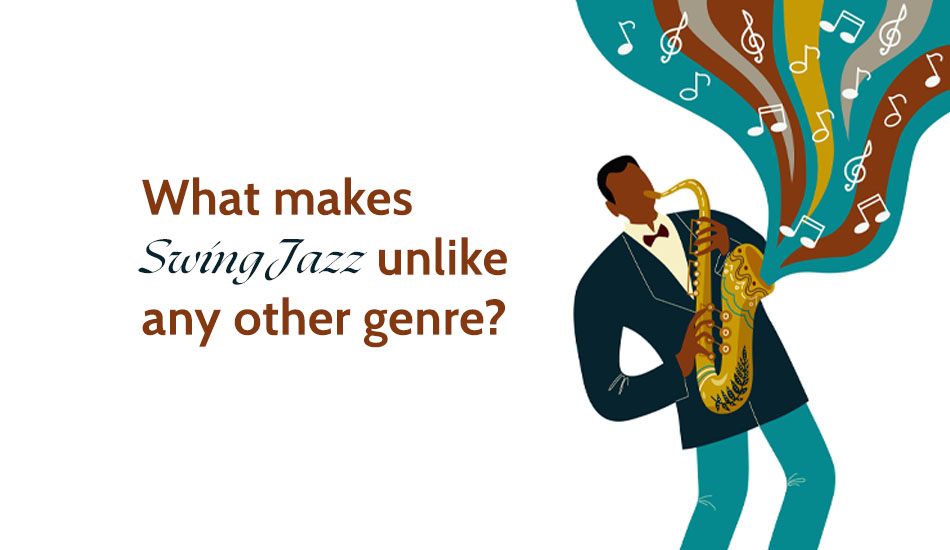
by dynamite | Nov 11, 2024 | Blog
Introduction to Swing Jazz
Swing Jazz first emerged in the 1930s in America to change the musical and culture of it. Due to its fast tempos, accentuated rhythmic displacement, and massive orchestras, it turned into the soul of parties, unifying people on the dance floor and radio listeners. Swing Jazz was the cross-over music that redefined popular music, and Art Jazz also brought new cultural values and new dances to the American musical mainstream. Their impact was deep and abiding.
Its essence can be summed up as freedom and expression; it presupposes equal parts technique and improvisation. It was created in an epoch when global society needed a bright, positive, self-inspiring logo. Governed by the Harlem Renaissance, this music developed in dance halls and theaters, encouraging togetherness, and is still creating young talents in this sphere worldwide. If levels of congruence between Swing Jazz and this proposed model are high, by analyzing its rhythmic offerings, key artists/bands, and cultural contributions, one will gain an even greater understanding of Swing Jazz’s eternity.
The Unique Rhythm and Tempo
Swing, the music that defines Swing Jazz, is characterized by a set rhythm that is syncopated/shuffled. It has this unique rhythm, which starts from somewhere, unlike most of the songs in the earlier jazz music, and this is a nice rhythm to dance to. The swing beat, for instance, being played in drums together with walking bass lines, imparts to the music a bouncing feel or dancing kind of feel. Swing jazz tempo is different from the strict ones of other genres; every swing jazz band and singer is free to breathe life into the beats.
Instrumentation and Ensemble Style
Swing Jazz will be performed by big bands and small combos that comprise brass woodwinds and rhythm sections. Everyone sings – trumpets, trombones and clarinets, saxophones alongside piano, bass, guitar, and drums to make it sound like music fills the entire room. Great big bands, led by Duke Ellington and Count Basie, became iconic orchestras that fascinated the listeners with bright sections and fascinating solos. Smaller combos, on the other hand, stressed the element of improvisation because the Swing Jazz, in essence, was the intimacies of bigger combos. In many signature music album recordings of this era, the impressive unity of style that was characteristic of this genre can be seen.
Famous Swing Jazz Musicians and Bands
Below are the several legends of musicians/bands that defined the progress of Swing Jazz: MOS are Count Basie, Benny Goodman or “king of swing”, and Duke Ellington, who set many trends with their arrangements and performance. Outstanding female artists such as Ella Fitzgerald and Billie Holiday started to gain public attention due to their passionisty rendering of lyrics and perfect pitch. Some of these gifted musicians started as a jazz singer in LA and around the globe, making the history of Swing Jazz seminal.
Improvisation in Swing Jazz
Swing jazz is generally characterized by big bands, set sections, and composed themes, but improvisation is still a critical factor in the subgenre. Vocalists often take turns and rush to center stage, specializing in impassioned, impromptu solos as a demonstration of self-imagination and talent. The flexibility of musicians and the freedom to improvise are the reasons Swing Jazz is never stagnated and boring. This tendency eliminates a significant amount of planning and makes a show emotionally charged for both performers and audiences.
Swing Dance Culture
Swing Jazz is characterized by one of the most easily recognizable and long-lived features associated with dancing. Like Lindy Hop, Jitterbug, and Charleston, the so-called jitterbug dances developed with the music to allow the body to relax into the sound, which reflects the feel of the period. Swing dance halls sprouted throughout the United States and evolved into entertaining social venues where people of color and whites enjoyed swing music and dance. Swing dance culture to this day is considered a subculture that is actively and continues to be met to popularize this kind of dance.
Swing Jazz in Modern Music
Swing Jazz does not have its place in contemporary society; rather the music style had its hay day in the Golden age of Swing Jazz. Today’s jazz, pop, and even electronics get their impulses from rhythm and harmonic swings. Artists today make it their business to innovate Swing Jazz and integrate some of the styles into new compositions to guarantee their prolonged existence. Although employed in signature music albums or mentioned by a jazz singer in LA, the spirited class of Swing Jazz is still heard today.
Conclusion
Swing Jazz is not just music; it is a cultural asset that defines music, dance, and society in its contemporary society. These elements have included dynamic beats, impressive improvisations, and a general display of joy that has enthralled generations of listeners and dancers alike. When the individual components of Swing Jazz are understood, it is possible to see why this musical development has left such an important legacy and why many pieces can evoke such intense emotions.
Swing Jazz reminds an astonished world that sometimes it is necessary to move slowly, dance the feeling, and embrace the bond that music creates. It also aims to remind people of the capabilities of the art of overcoming all barriers and giving. Sometimes, it is necessary to unite and rejoice; This is why art remains a part of modern music and culture.
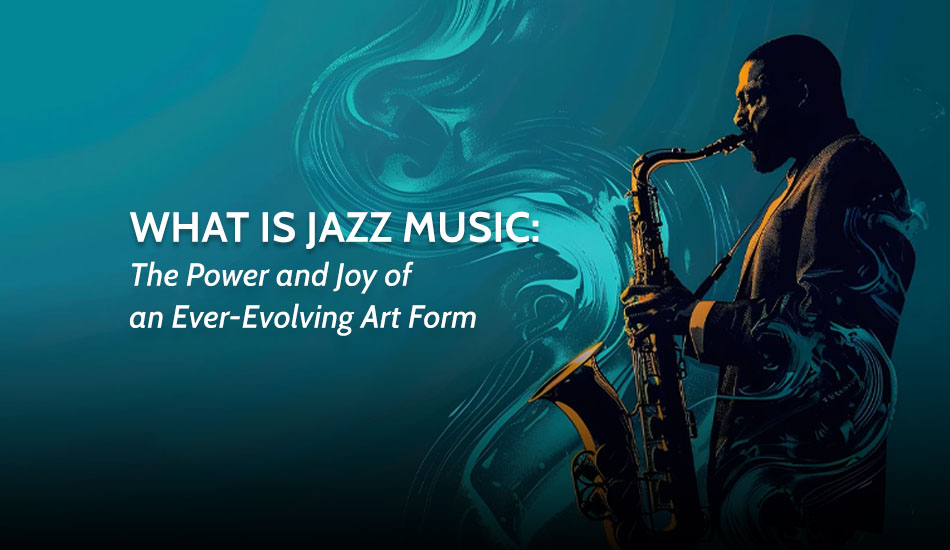
by dynamite | Oct 28, 2024 | Blog
What is Jazz Music? This question can lead to the most fertile territory of world’s musical culture, which enriches people timelessly. When you exaggerate the definition of Jazz, you could say that Jazz is not only a type of music; instead, it is feel, communication, and liberty. From African American roots and influenced by several others jazz has emerged as music of self and of group. It has longevity because despite the changes that occur it is always able to modify while keeping those crucial characteristics. No matter if it is the best jazz songs or a new album in jazz, it is a voyage, which is good to take.
What is Jazz Music?
In its simplest terms, jazz is a style of music that encourages improvisation, syncopation and rhythm and incorporates components of blues, ragtime classical and swing. It’s music by which performers can play around and dare even sometimes within still holding to certain structures in the song. With its roots starting in the late 1800s and early 1900s jazz music emerged from the streets of New Orleans, quickly surrounding the entire United States, and soon the rest of the world.
From black African roots, Jazz embraced a new idea in the application of acoustics integrating the harmonic functionalities of the European society. It is progressive, progressive with the times and revolution in some ways yet it remains conservative.
The Value of Music
Music is known to affect people’s emotions and psychology and jazz music does all of this and much more, it awakens creativity, and defies conformity while bringing happiness. Jazz is rewarding in both capacities for the performer as well as for the listener. But as you delve deeper, you find yourself making sense of why the best of the songs continue to be played to this day and why artists continue to infringe new albums into this class of music.
Jazz is a Fundamentally Democratic Style of Music
This is not just a figure of speech because jazz is all about interaction. And because rock originated from different genres of music, coupled with the structures of the current genre which allows each musician to bring their own, makes this sort of art form very democratic. At least three, four, or even more people in a band can explore various styles and answer each other spontaneously. They pointed this form of conversation gives a musical format to the entire conversation and everyone has their part to play. Jazz as a subject reinforces the principles of democracy, especially listening and working together.
Jazz is a Fundamentally Diverse Style of Music
Jazz music is about differences, it is about a free spirit. The genre is a mix of cultures, influential people, and important ideas. It incorporates rhythms of African origin, harmonies of European classical composition, and melodies from blues and folk tunes. Jazz has also grown to develop many countries and cultures; it can be Brazilian Bossa nova or French gypsy jazz. We’ve seen that the diverse nature of jazz can be summarised by the fact that it is not merely a form of music that incorporates diversity as part of its constituent features, but rather, it is with diversity that jazz continues to develop and thrive.
Jazz is a Fundamentally Creative Style of Music
Jazz thrives on creativity. Standards are ever-evolving, and musicians mix genres, then creatively ‘jam’ all at once. Not surprisingly, while painting free improvisation is an important element of jazz music as every single musical mistake, any unexpected turns, and, of course, an individual approach to performance is allowed in jazz, unlike in other musical genres. It enlightens that there is no correct method for enjoying or performing jazz. Both are perfectly right, and that openness is the sole reason why the genre remains vital and relevant.
Jazz is a Fundamentally Life-Affirming Style of Music
Jazz, to be more precise, and celebrating life in all its forms is essential. In a dance of a big band tune to the cry of a blues song, jazz is like a document of human thing in its sweets and sour. It reclaims passion, emotions and instinct as being valid ways of being in the world.
Jazz is Uniquely Fun, Challenging, and Enriching
Music, especially jazz is not something that is heard, but is an interaction of several levels of a person. It is enjoyable because it moves in a swing like manner, it is difficult because its design is compounded and it is rewarding because it is as deep as one wants to go. Whether you are an instrumentalist attempting to get through bars or a listener struggling to make sense of a solo, jazz never lets you fall asleep. It never lets the genre alone without challenging you to ponder, to embrace feelings and to develop, They learn when you are searching for the best jazz songs, or when you are looking for a new jazz album.
Conclusion
As a result, the question: What is Jazz Music? Not only is it a type of music, it is an altogether lifestyle. Yet, jazz is free, distinctive, innovative, and all about living. It unites populations, it makes us question things, and where possible it is a source of happiness in its randomness.
What you discover about jazz is that it is a music, that grows, expands, and develops in many positive ways for both the listener and performer. Whether you’re dipping back into an OG album, or diving into a new jazz album, the path of jazz is one that does not have an end.






